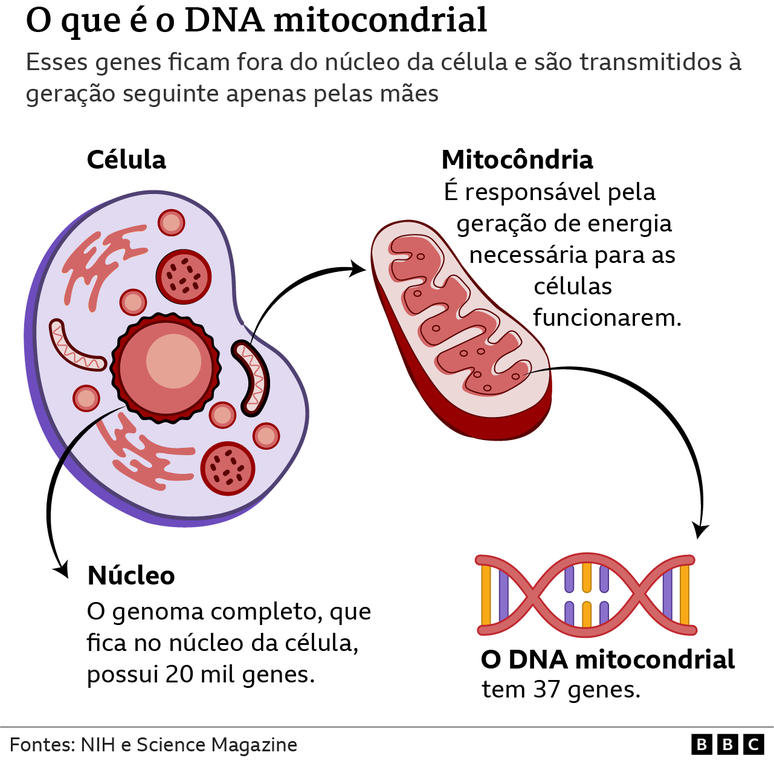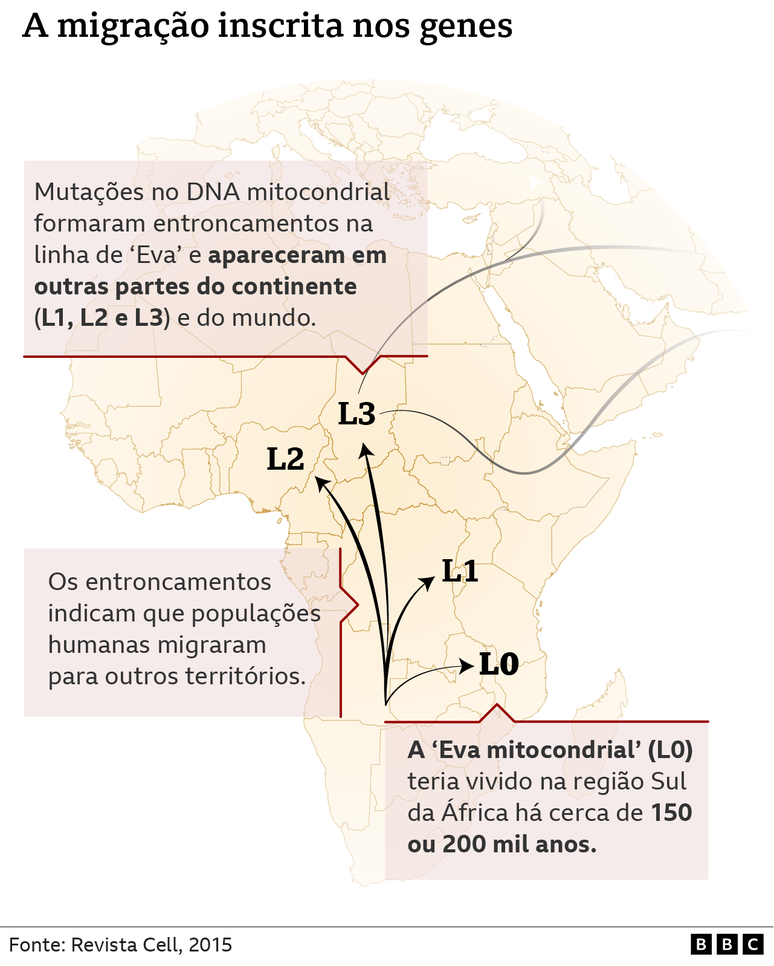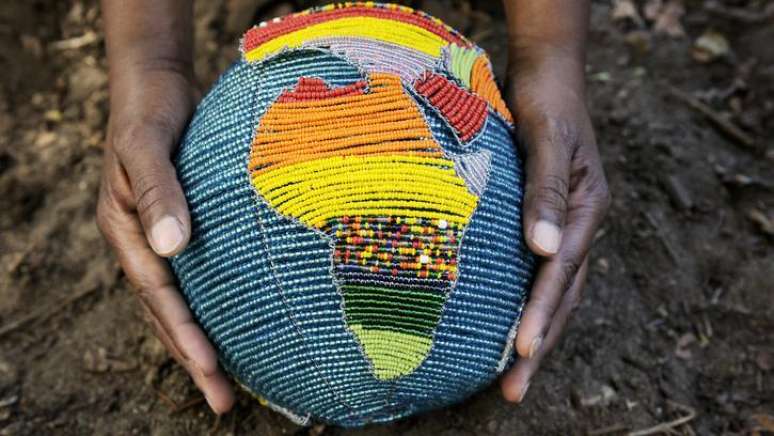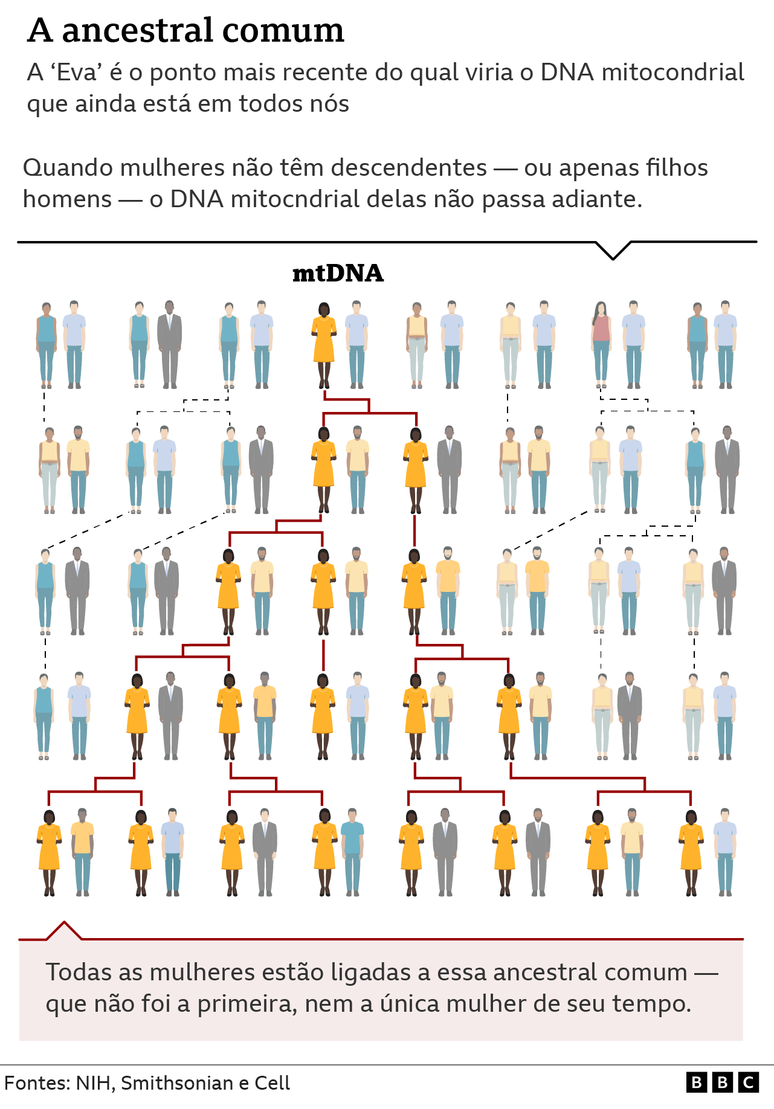The scientific concept is based on the discoveries of genetics and has nothing to do with the biblical story. Understand the evidence and controversy surrounding this woman and how she originated all lineages observed to date, according to research.
In the Bible, Eve was the first woman in history and, together with Adam, gave birth to all mankind. In science, the same name has been used for at least four decades to describe a phenomenon that occurs in the genetic material that we carry inside all of our cells.
Contrary to biblical myth, however, “scientific” Eve (or mitochondrial Eve, to be more precise) is the most recent common ancestor of all mankind – barring the term “most recent,” as it is important for understanding the history of humanity. ‘humanity. difference between concepts.
From what is known so far, this woman would have lived 150 or 200 thousand years ago in the region we know today as Zimbabwe and Botswana, in southern Africa.
And it is worth mentioning that she was not the first woman in history, nor even the only one of her time. But, for a number of factors, a small piece of her DNA appears in all the generations of human beings that have come since then, according to several studies published so far.
To understand this story it is necessary to take a step back and know the details of a very particular structure of our body: the mitochondria.
Next, understand the evidence and controversy surrounding this woman and how she gave rise to all lineages observed to date, according to research.
A microscopic power plant
All of our cells have a structure called mitochondria.
“Mitochondria are an organelle that produces energy,” summarizes biologist Gabriela Cybis, professor in the Department of Statistics of the Federal University of Rio Grande do Sul (UFRGS).
In other words, this structure is responsible for converting sugar obtained from food into ATP molecules, a sort of “common currency” of energy that our body uses to function.
And these mini-generators have a unique feature: they carry their own DNA.
The genome, made up of 20,000 different genes and responsible for determining much of our characteristics and propensities for disease, is stored in the nucleus of the cell.
Mitochondria, which are inside the cell but outside the nucleus, have 37 genes to call their own. They are known to scientists as mitochondrial DNA (or mtDNA), as you can see in the image below.

And this is where the story gets even more curious. We inherit mtDNA exclusively from our mothers.
In fertilization, when the egg and sperm meet, the mitochondria of the male gamete are lost en route as the two cells fuse.
Therefore, the embryo is always formed only from mitochondria of maternal origin.
This information therefore allows us to establish that there are uninterrupted lineages formed only by women over several generations and thousands of years, which are connected precisely by mtDNA.
After all, every daughter has a mother. But not all mothers have a daughter: if the woman has only sons (or does not produce offspring), her mitochondrial DNA will not be passed on to any grandchildren.
“So, in genetic terms, it’s possible to trace who is the mother of the mother, of the mother, of the mother… And so on and on and on,” Cybis points out.
A tree full of branches
Advances in knowledge of genetics and gene sequencing and processing technologies have allowed scientists to reconstruct the origins of mtDNA.
Biologist Bibiana Fam, from the Genomic Medicine Laboratory of the Hospital de Clínicas de Porto Alegre, explains that the first works on the most recent common ancestor of all of us were published in the 1980s.
According to her, these items started dating the most recent common ancestor. At the same time, the first reports using the term “Mitochondrial Eve” appeared—the name stuck and is still used today, despite confusion with the Biblical concept.
Geneticist Tábita Hünemeier, from the Department of Genetics and Evolutionary Biology at the University of São Paulo’s (USP) Institute of Biosciences, says that the use of the given name in this context was a kind of “poetic license”.
“But the idea is completely based on scientific evidence and has nothing to do with the Bible,” he clarifies.
In practical terms, to restore this past, the experts have done an inverse calculation. They sequenced the mtDNA of several individuals around the world and, with the help of computers, compared the information and mutations found in this material.
Scientists have learned to estimate how long it takes for these genetic mutations to appear over generations.
“This allowed us to calibrate this ‘molecular clock’ and better understand how long it took for the observed mutations in mitochondrial DNA to occur,” says Fam.
From this it was possible to calculate that mitochondrial Eve would have lived in southern Africa between 150 and 200 thousand years ago.
It forms the “original” trunk of this huge genetic tree: individuals carrying this mtDNA are classified in some articles as L or L0.
From then on, the mtDNA of successive generations mutated little by little. With that came the ramifications (or haplogroups, in scientific parlance), as you can see in the map below.

For example: in other parts of Africa, the haplogroups L1, L2, L3…
As our ancestors migrated to other continents, more mtDNA mutations appeared. In parts of the Middle East and Europe, the H, V, and R “branches” among others predominate.
In the Americas, groups A, B, C and D are frequently observed.
The study of mitochondrial DNA, therefore, not only helps to unravel where we came from, but also allows us to trace the path of our ancestors (or rather, female ancestors) around the world over hundreds of thousands of years.
“What we have, therefore, is a common ancestor who carried one mtDNA from which all other mtDNAs that exist today are derived,” summarizes Hünemeier.
“We’re not talking about the same mtDNA in everyone, but about lineages that bring together sets of mutations that have emerged over time,” he adds.

Controversies and confusions
Let me be clear: Mitochondrial Eve was not the first woman in history.
There were many other generations before her, such as her mother, grandmothers and great-grandmothers – and, over millions and millions of years of evolution, ancestors of other species from which the homo sapiens evolved.
“It could be that at some point, if we keep doing this reverse calculation, we’ll get to our most recent common ancestors who weren’t homo sapiensbut some other hominin,” Cybis points out
And, as explained earlier, Mitochondrial Eve was not alone in her time either. There were most likely other women living in the same place.
The point is, as the millennia rolled on, these other mtDNAs fell by the wayside.
This occurred because, in certain generations, women with different mtDNA did not produce offspring, or only had sons, which stopped the “passing” of their genetic material onwards.

Cybis believes that because the subject spans thousands and thousands of years, there is a considerable degree of uncertainty in the calculations and projections published so far.
“But without a doubt, the information we have today about mitochondrial Eve is our best estimate,” he says.
“And we have to bear in mind that the migratory and demographic processes of humans are very complex,” agrees Hünemeier.
“Even so, scientific advances allow genetic analysis algorithms and molecular clocks to be better calibrated. With this, we will become better and more precise in these searches,” concludes Fam.
Source: Terra
Rose James is a Gossipify movie and series reviewer known for her in-depth analysis and unique perspective on the latest releases. With a background in film studies, she provides engaging and informative reviews, and keeps readers up to date with industry trends and emerging talents.








